The Battle Bluff Trail & A Less Frustrating Day in Kamloops
✍️ • 🕑 • Series: Towards the Beautiful Islands • Tags: lakes • sunsets • museums • trains • badlands • politics • residential schools • Places: Kamloops Indian Residential School • Battle Bluff Trailhead
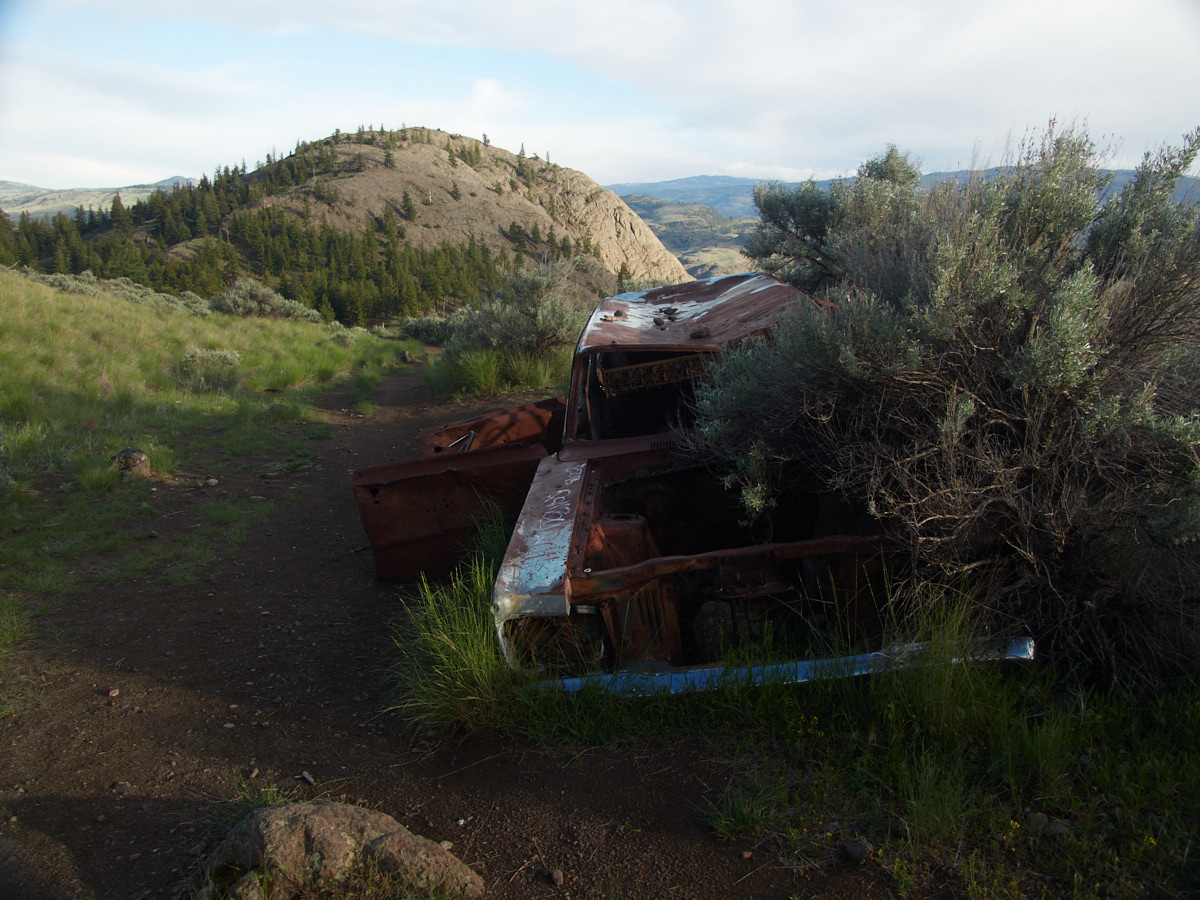
Better, more spectacular, car-free views follow in the rest of the post. open_in_full info
My second day in Kamloops was another workday. I stayed in bed for a fair few hours, punching away at my laptop. Then, I emerged to make myself coffee.
I figured I could use the caffeine as I looked forward to the day ahead. I was going to get some good eats, hit up some local sights downtown, visit a nature preserve and do some hiking, make up my mind about my plans for the upcoming weekend and my first few days off, and pick up the supplies I’d need for my next few days camping.
In short, I was going to be busy!
Table of Contents
Downtown Kamloops + Museums
At lunch time, I hit up the West African Restaurant for some waakye, which was delightful, but held no candles to the waakye I had in Ghana.
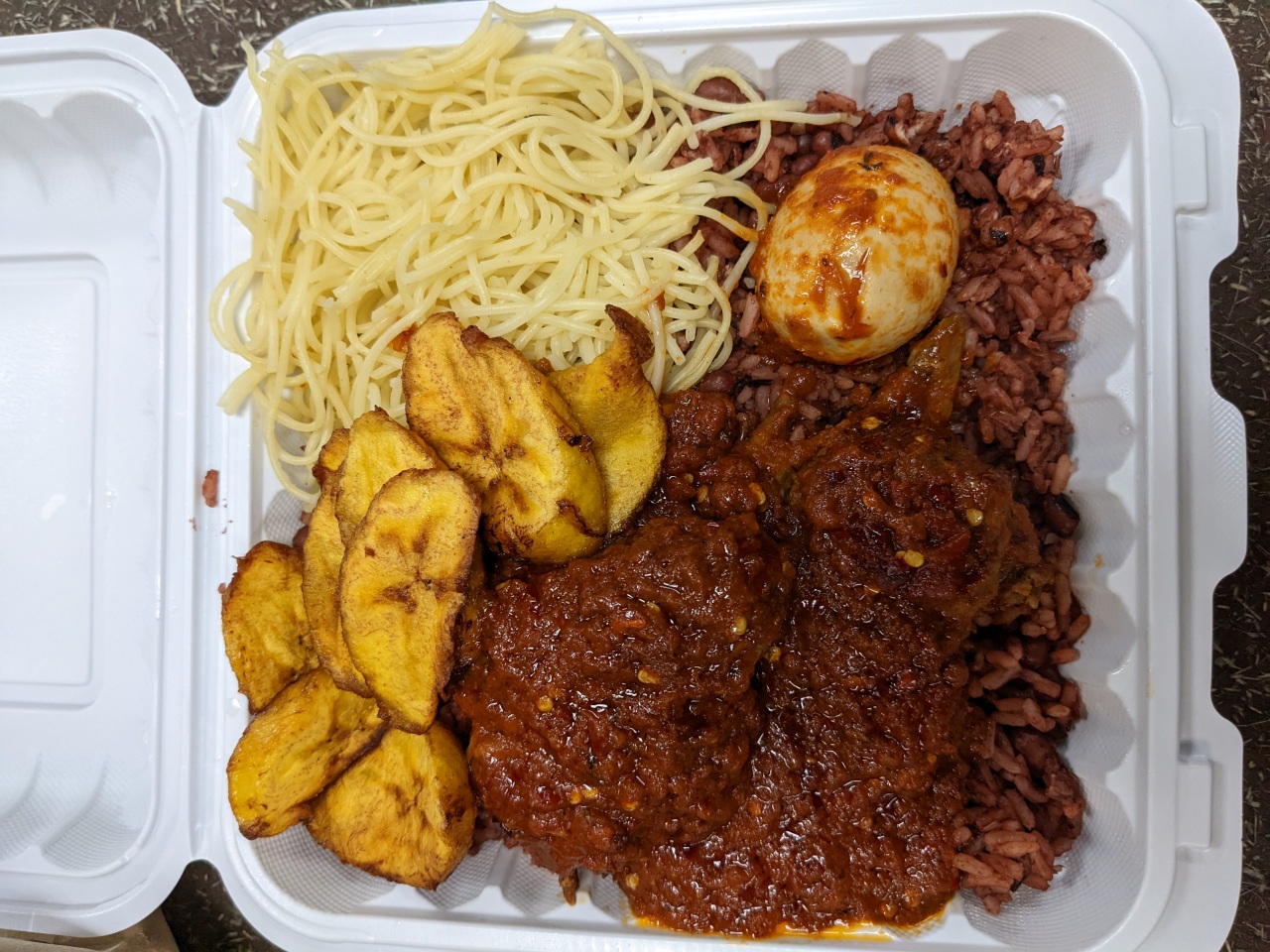
The nearby Kamloops Museum offered an eclectic set of exhibits, including a current one on Japanese culture in Kamloops.
I was sad but unsurprised to learn that the Canadians had their own Japanese internment camps during World War II. However, I was glad to learn about years of Canadian-Japanese intercultural exchange in Kamloops. For example, the all-Japanese (and poorly named) North Kamloops Mohawks were a Japanese baseball team that won the BC Interior Baseball League Championship twice in the five years (1952-1957) they were active.
The museum also covered the Victorian era, pioneers, the fur trade, indigenous ways of life, and had a small selection of minerals and a vast selection of taxidermied animals.
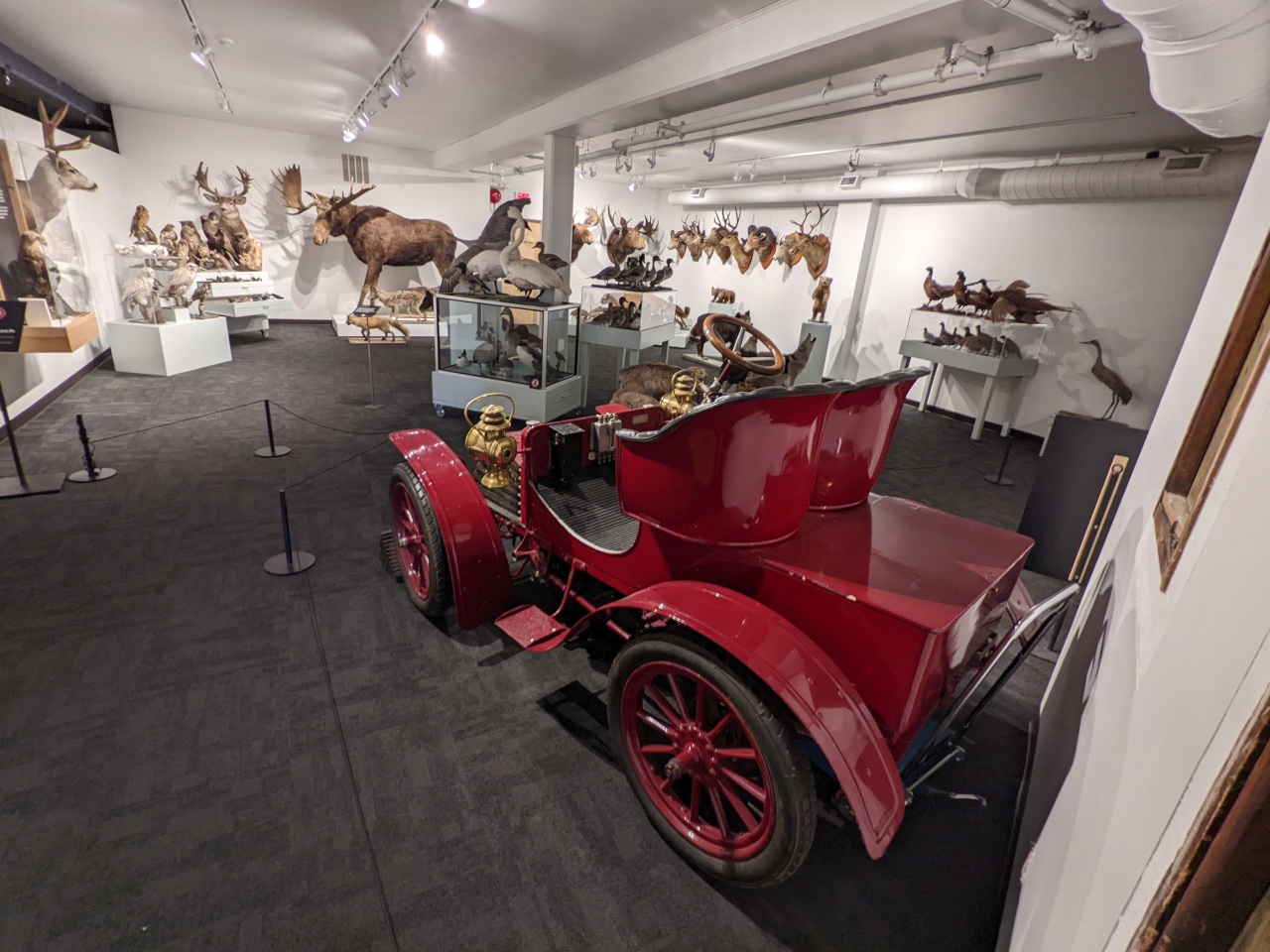
It was here that I really enjoyed seeing some of Benjamin Baltzy’s photographs, taken during geological surveys of British Columbia. Here’s one that I photographed crooked with my phone:
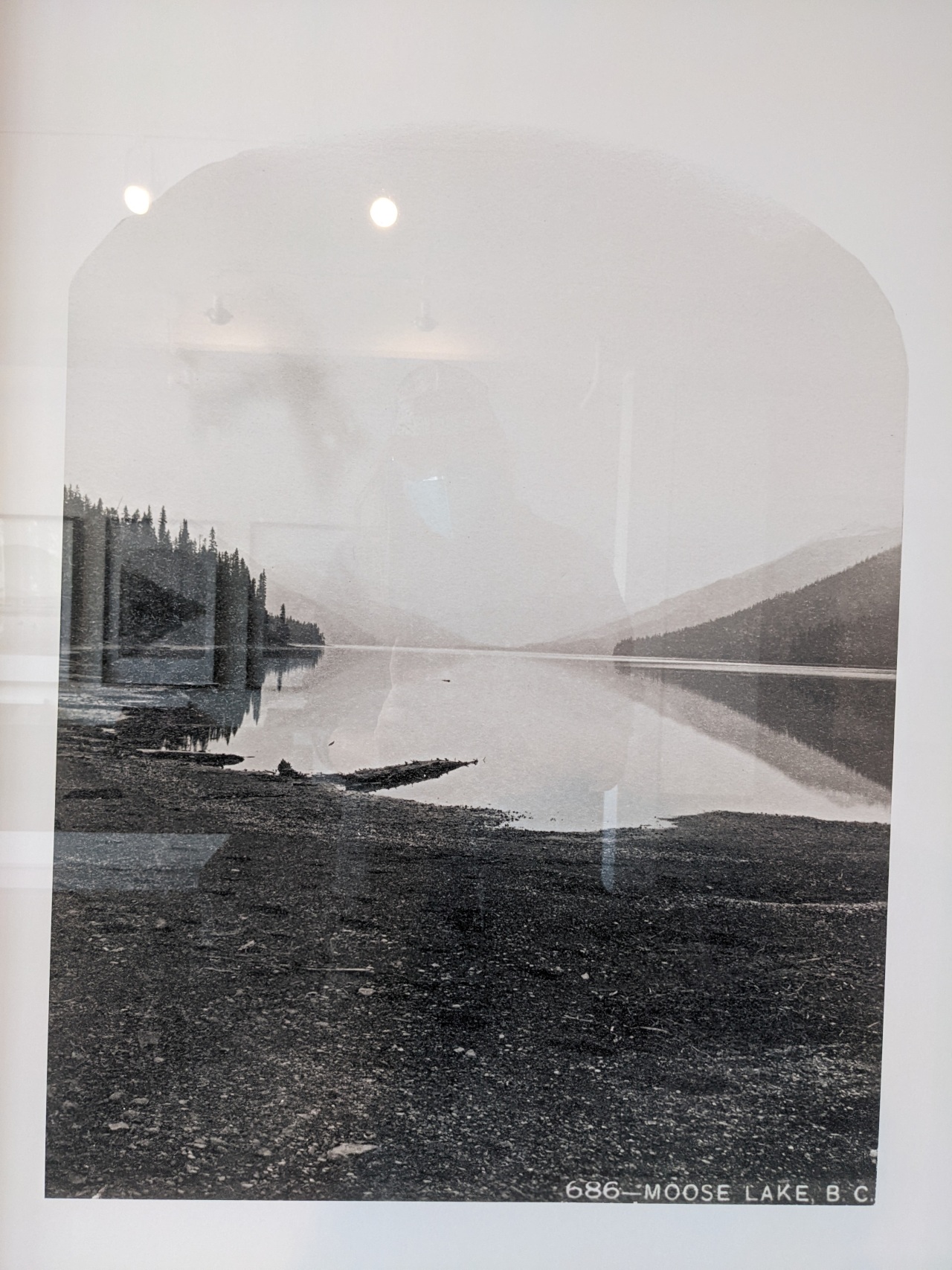
I would draw on them shortly thereafter for a photography challenge that required me to be inspired by a photographer.
The nearby Kamloops Art Gallery had a few small exhibits, showcasing the work of a local painter, and a Korean-Canadian video and installation artist, and was good for a quick visit, but not a place I would go out of my way to see.
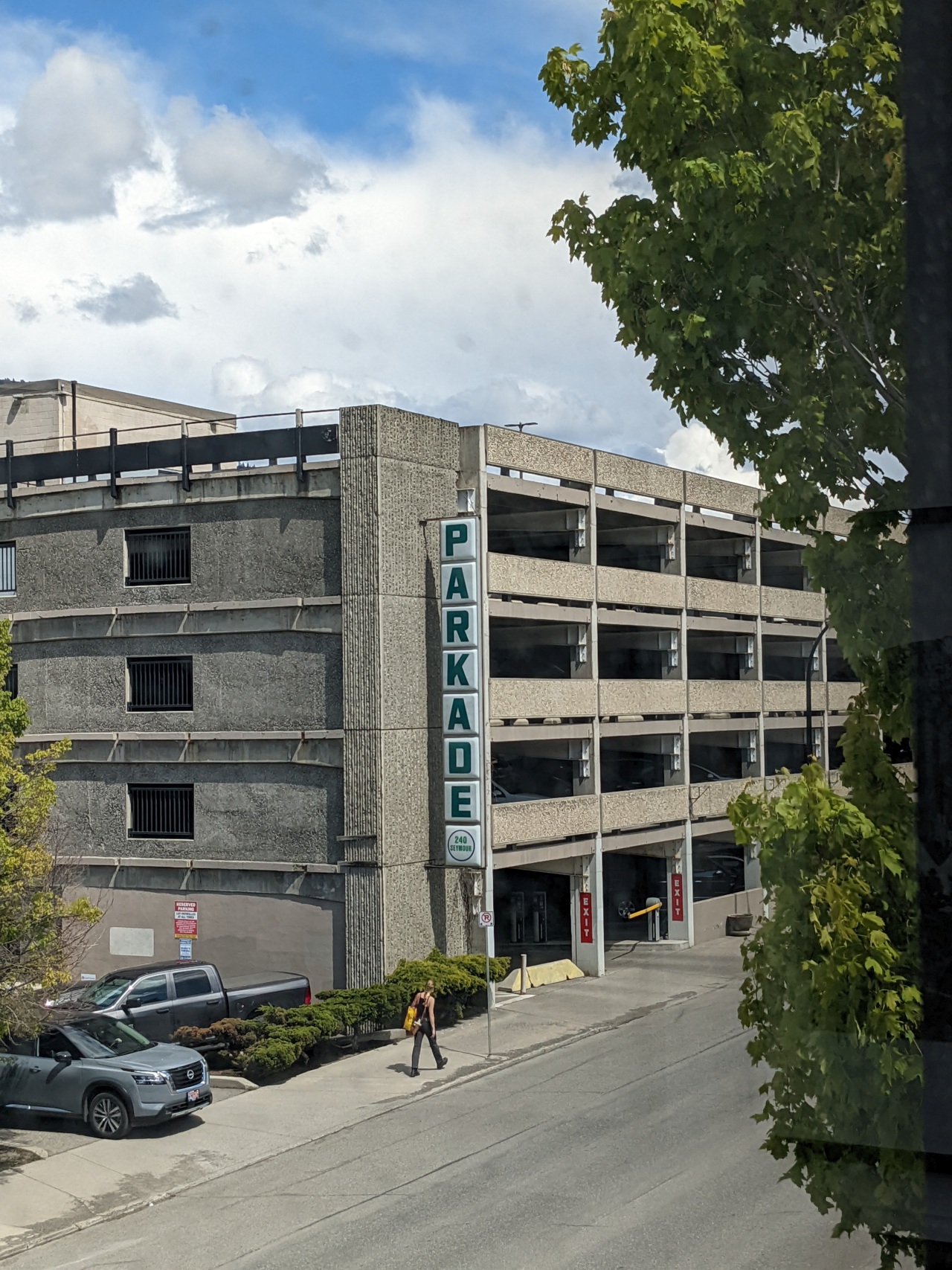
Fortunately, I'm not him, and I rather like this photo. open_in_full info
The Unspoken
Outside of the downtown center, I stopped by the Kamloops Residential School, a beautiful brick building that was the sight for a lot of truly brutal and grotesque behavior.
Today, it is owned by the Tk’emlúps te Secwépemc First Nation and has served as a museum and cultural center. I don’t believe that any part of the cultural center was open to the public when I visited. I paid my respects, and I moved on.
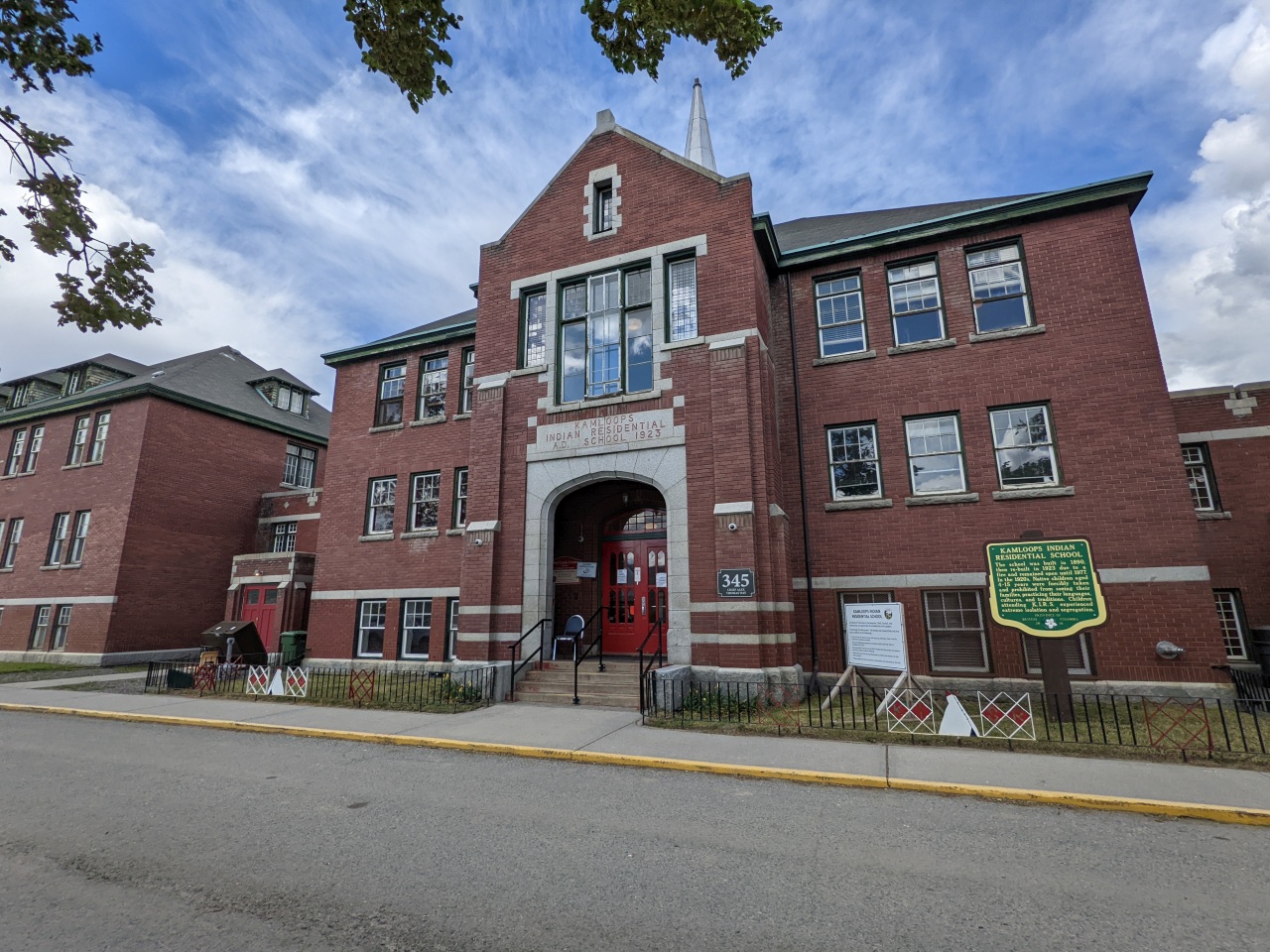
Residential schools in Canada (and the United States) operated for many years. The Kamloops Residential School specifically operated from 1893-1978 and was operated primarily by the Catholic Church.
Indigenous youths were separated from their families, and sent to boarding schools designed to destroy their cultures. Speaking their native languages, for example, was prohibited, and punishments were harsh and swift. The end result: cultural genocide.
The Kamloops Residential School made headlines in 2021, when anthropologist Dr. Sarah Beaulieu studied the area with ground-penetrating radar and discovered the probable remains of over 200 children. The area is yet to be excavated, but the grounds now contain a makeshift memorial.
All of this is unthinkable to me, and is part of a wide reckoning happening in Canada; calls for truth and reconciliation, and movements like Every Child Matters and Orange Shirt Day have become fairly mainstream, co-existing awkwardly with dominant colonialist ideology. None of this is enough to ever make up for decades of pain, silence, and loss.
I am glad that people are having conversations about residential schools in Canada. They are a part of museums, art, and the cultural discourse in a way that they simply aren’t in the United States, despite the same legacy existing here.
Carlisle, Pennsylvania was the site of one of the world’s first Indian Residential Schools, a model for assimilationist policy and cultural genocide to follow. I grew up mere hours from the site. And I could easily have gone my entire life never knowing.
Every Child Matters, and the more that we can do to discuss the ugly past, learn from it, and make reparations, the better.
Battle Bluff Trail
Finally, finally, finally – at the end of the day, I embarked on a hike. And, for the first time since I left Seattle, for the first time in the days or weeks before I left Seattle, I again felt grounded. I felt like I knew what I was doing, and why.
The hike was the Battle Bluff trail in the Lac Du Bois Grasslands, basically a preserve adjacent to the airport and a number of quarries and compost dumps on the north side of the Thompson River. The preserve itself is home to hoodos, canyons, and quite an extensive set of hiking routes, some of which even have the benefit of being well-defined trails.
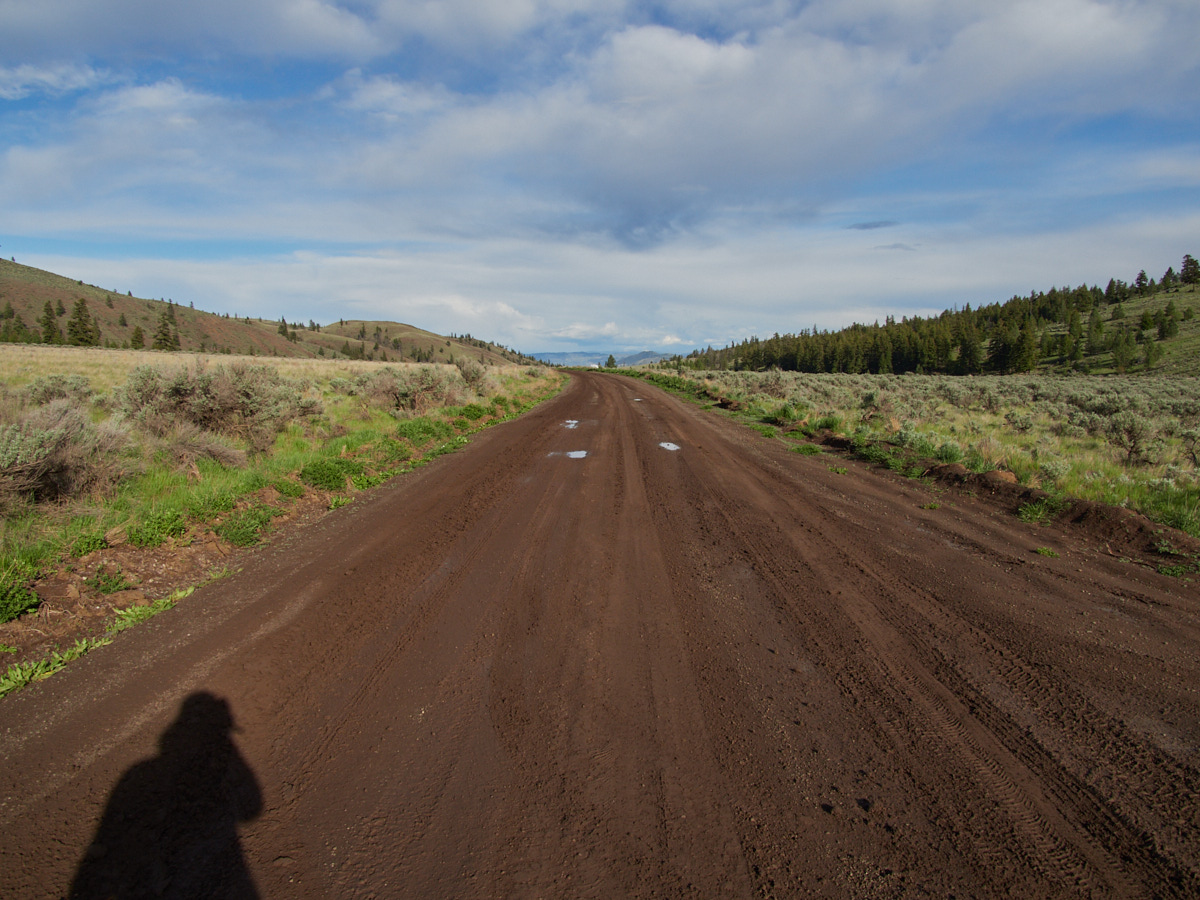
| Trail Information | ||
|---|---|---|
| Name | Battle Bluff Trail | |
| Location | Lac du Bois Grassland | |
| State | BC | |
| Country | Canada | |
| Miles | 2.8 | |
| Type | out-and-back | |
| Check out the trails index for information on more trails! | ||
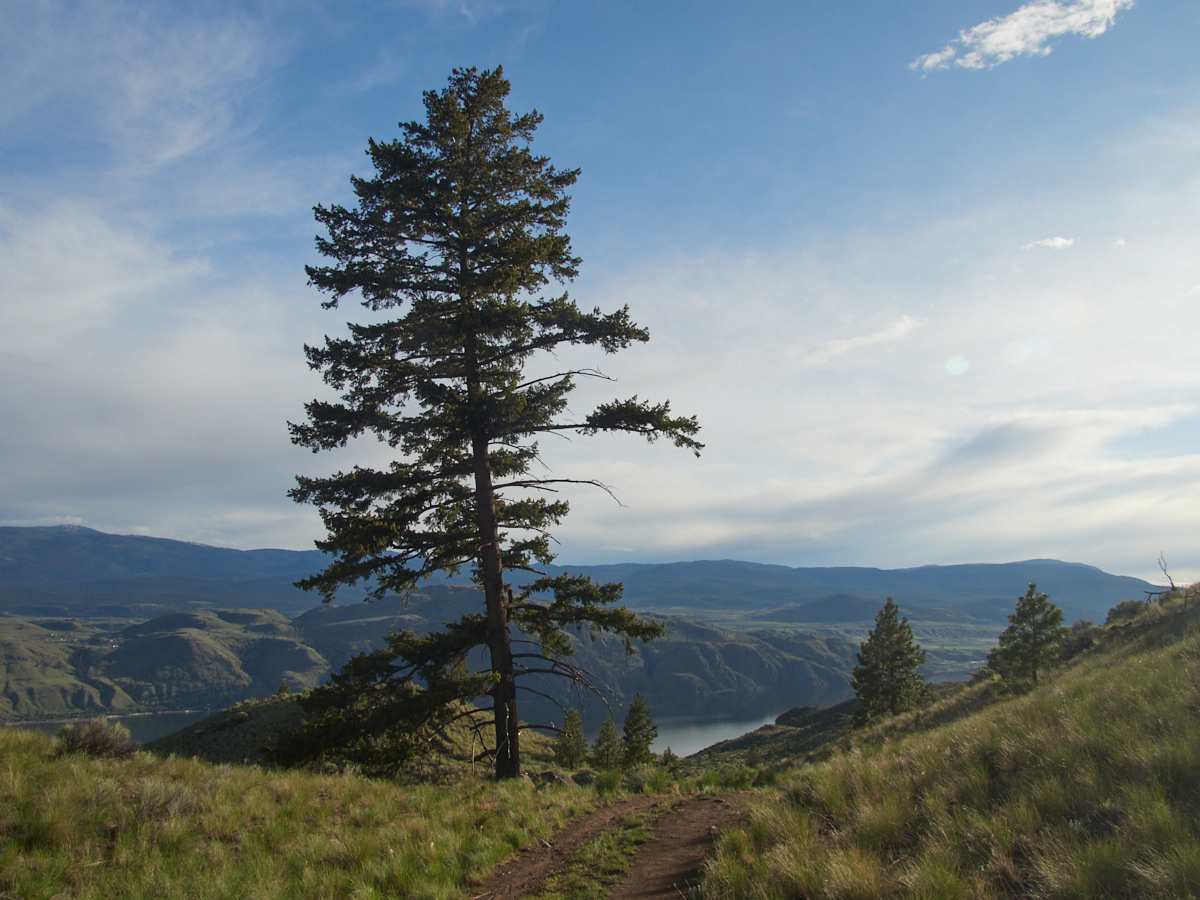
Of the trails near Kamloops, it seemed like the one with the best reward-to-risk ratio: gorgeous views, and an easy, well trodden route.
Well, it is.
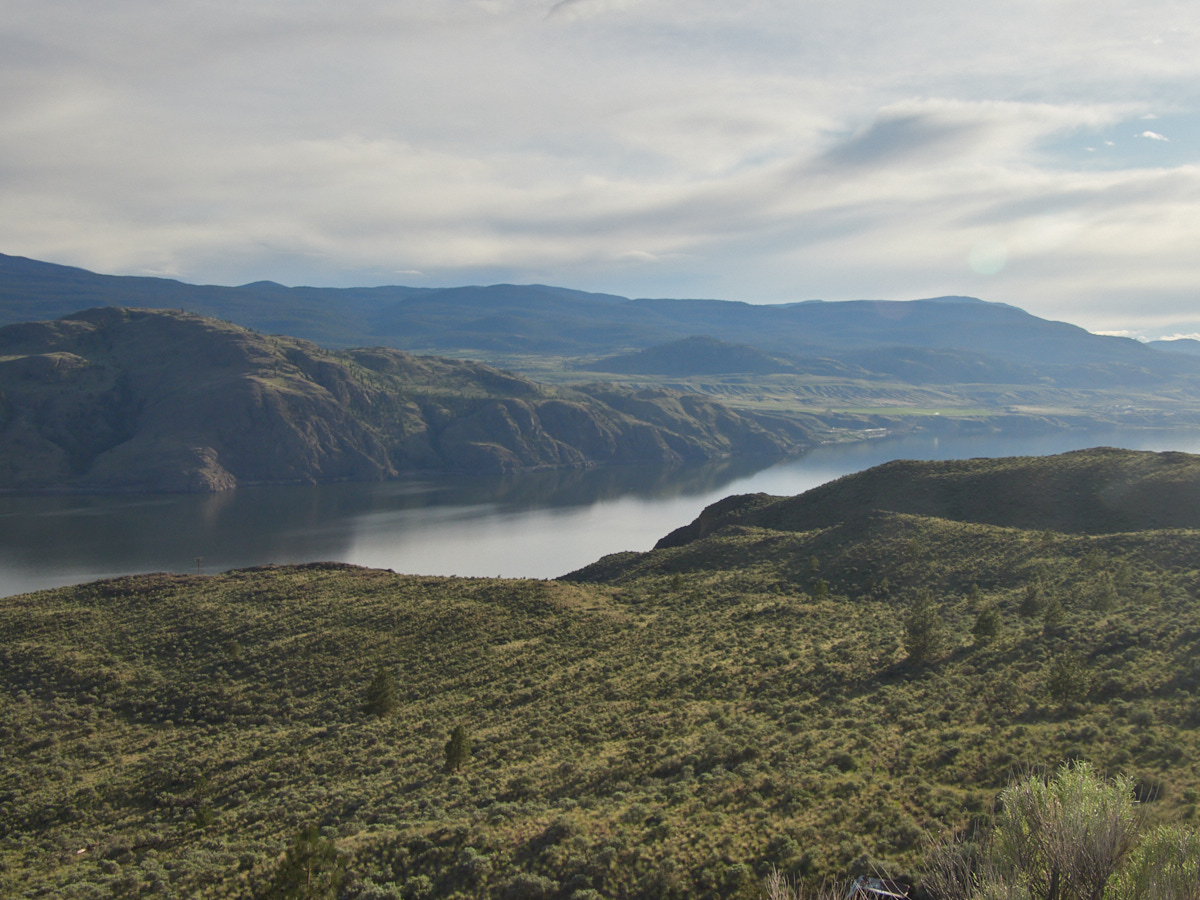
The hike to Battle Bluff is a well-defined, popular trail, judging from the fact that there’s spill-over parking, the trail is well-worn, and there’s a great deal of signage. That said, I was the only person on the trail the entire time I was there.
(Drop this trail anywhere in the Pacific Northwest, and it would always have someone on it, even in the dead of winter! Solitude of this sort is not a luxury I am accustomed to!)
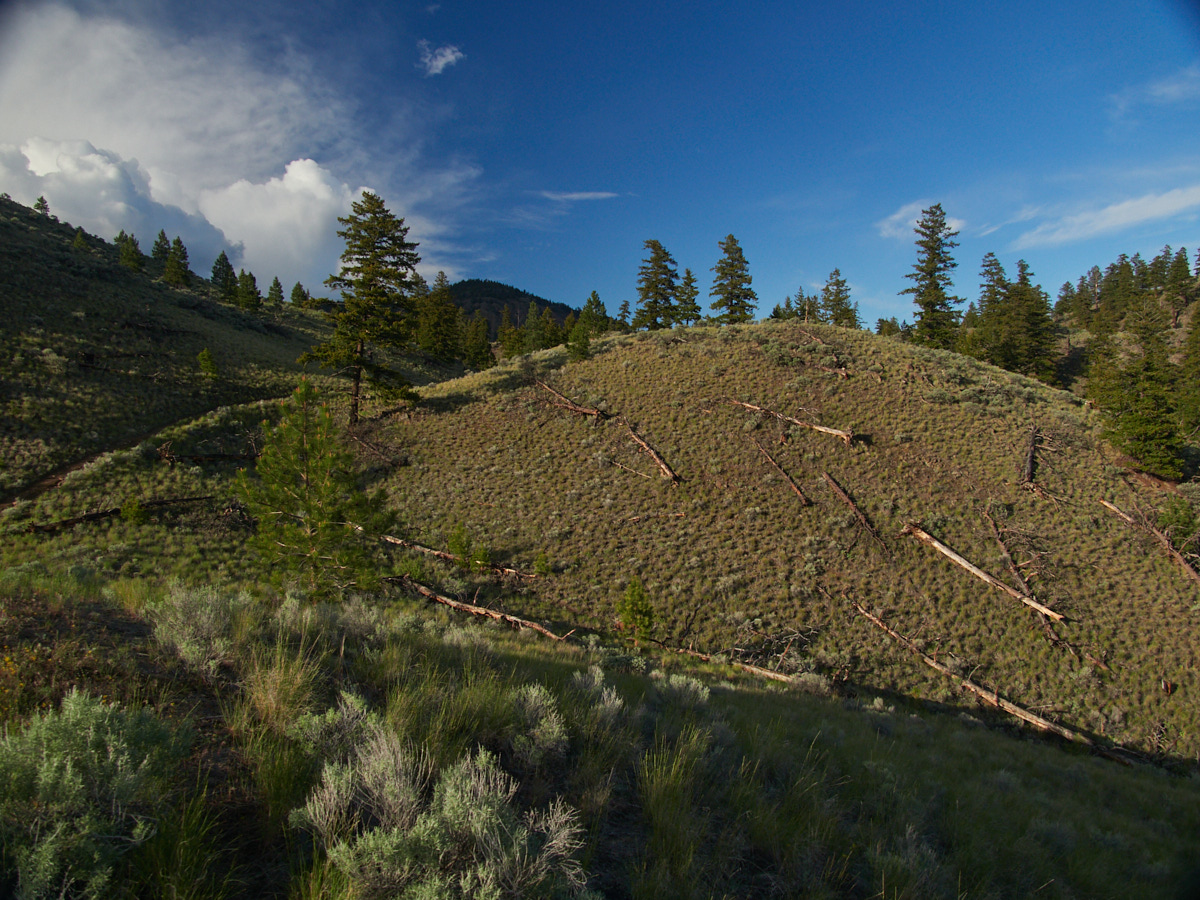
You just go up, then down, then up, then down (past the two abandoned cars), then up, up, and up until a panoramic view of train tracks, lakes, grasslands, buttes, and so on and so forth.
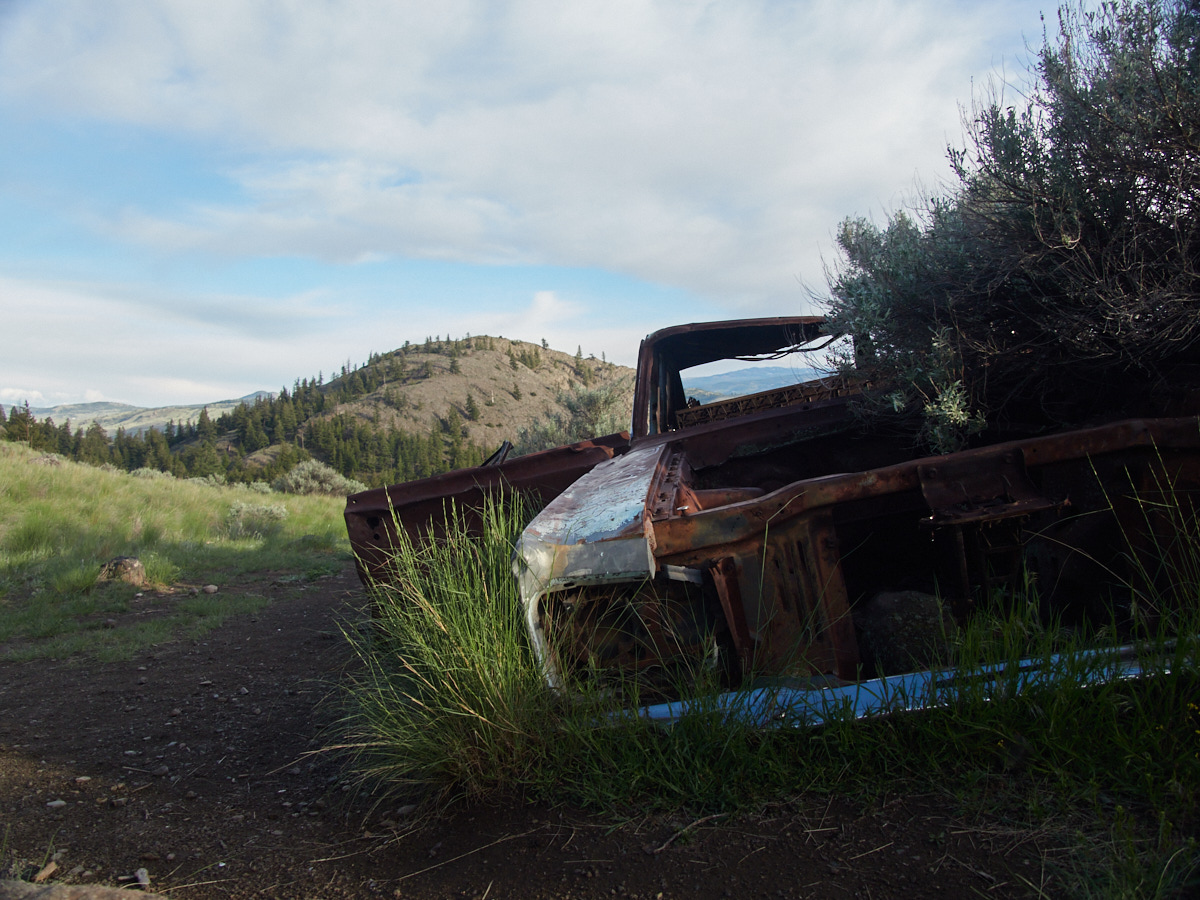
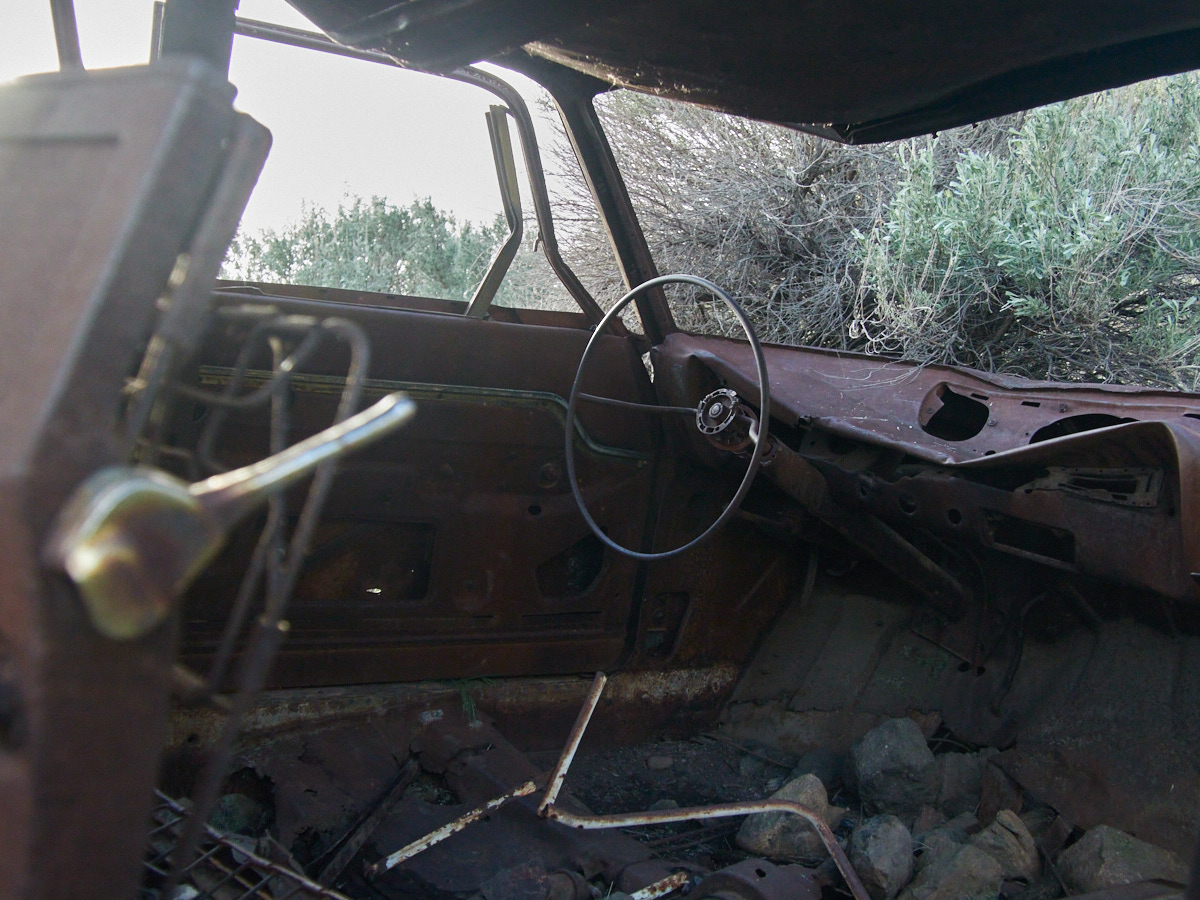
It’s a shame to see human waste dumped here, but this particular car is rather photogenic.
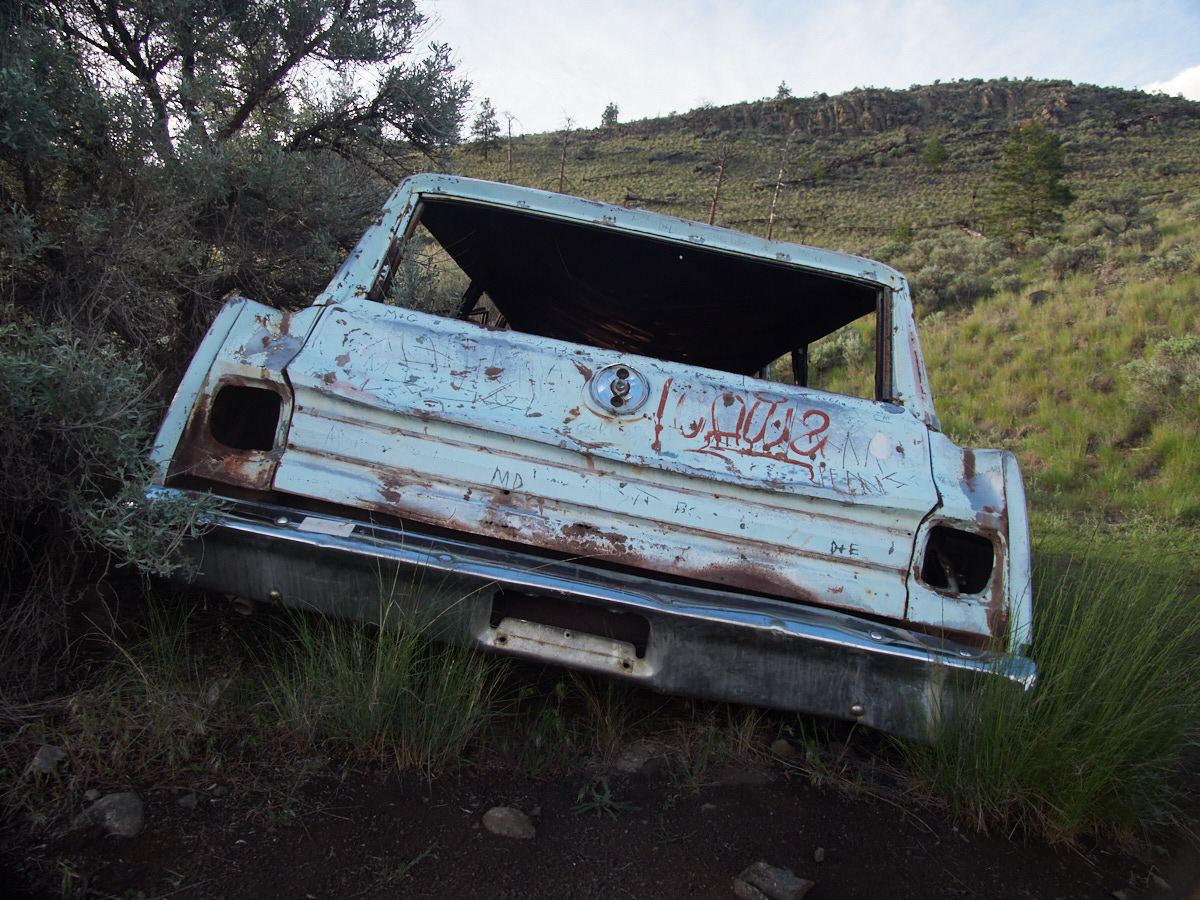
I spent some time atop the bluff, waiting for the sun to set.
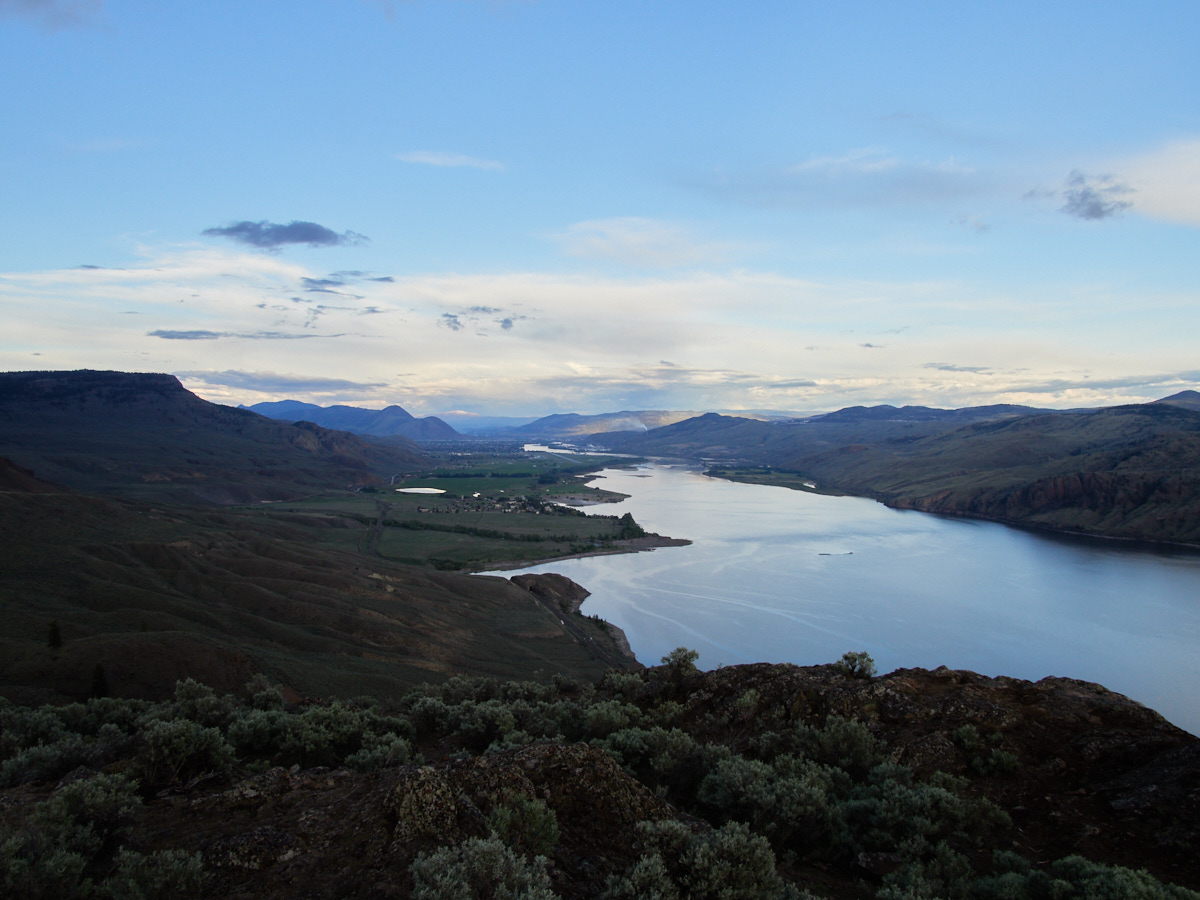
I had an excellent vantage point to watch long, snaking trains move along long snaking train tracks on the edge of the water.
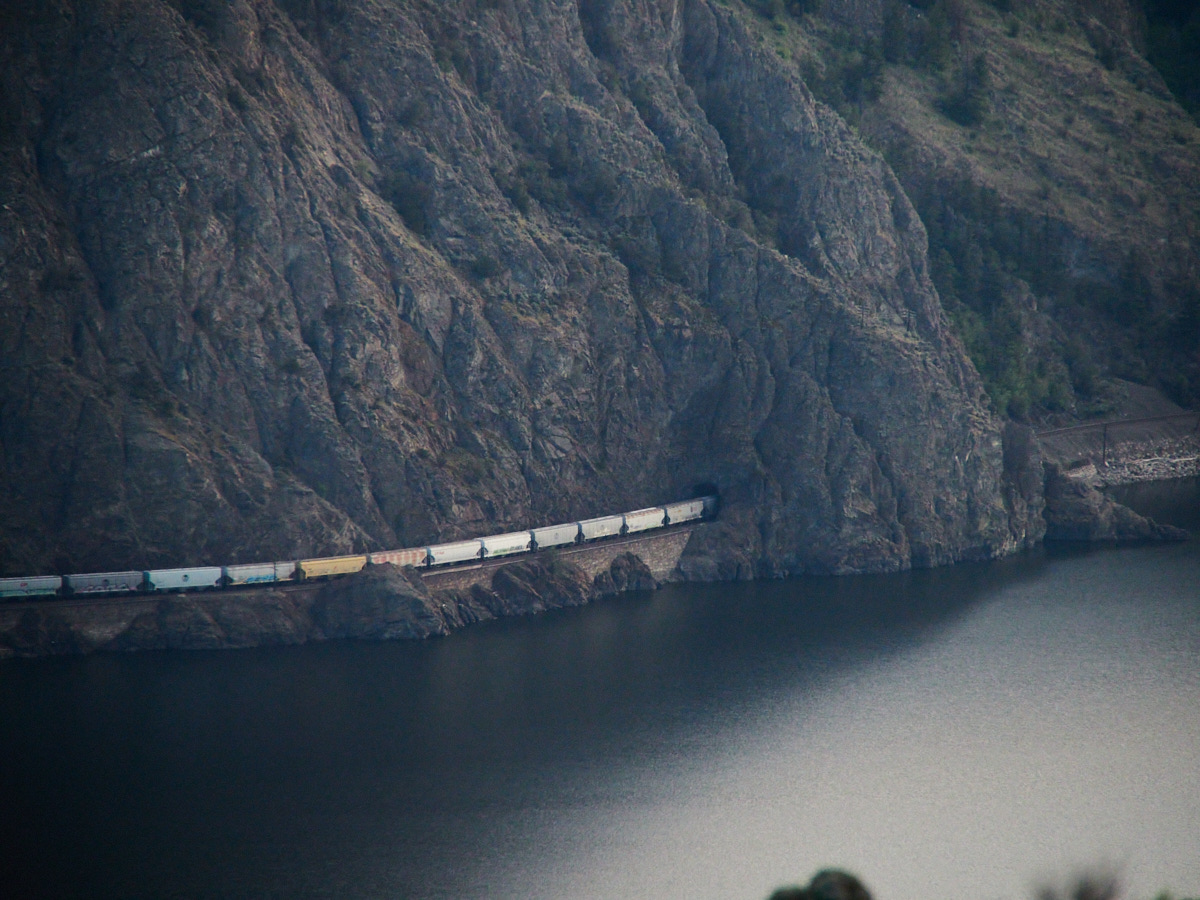
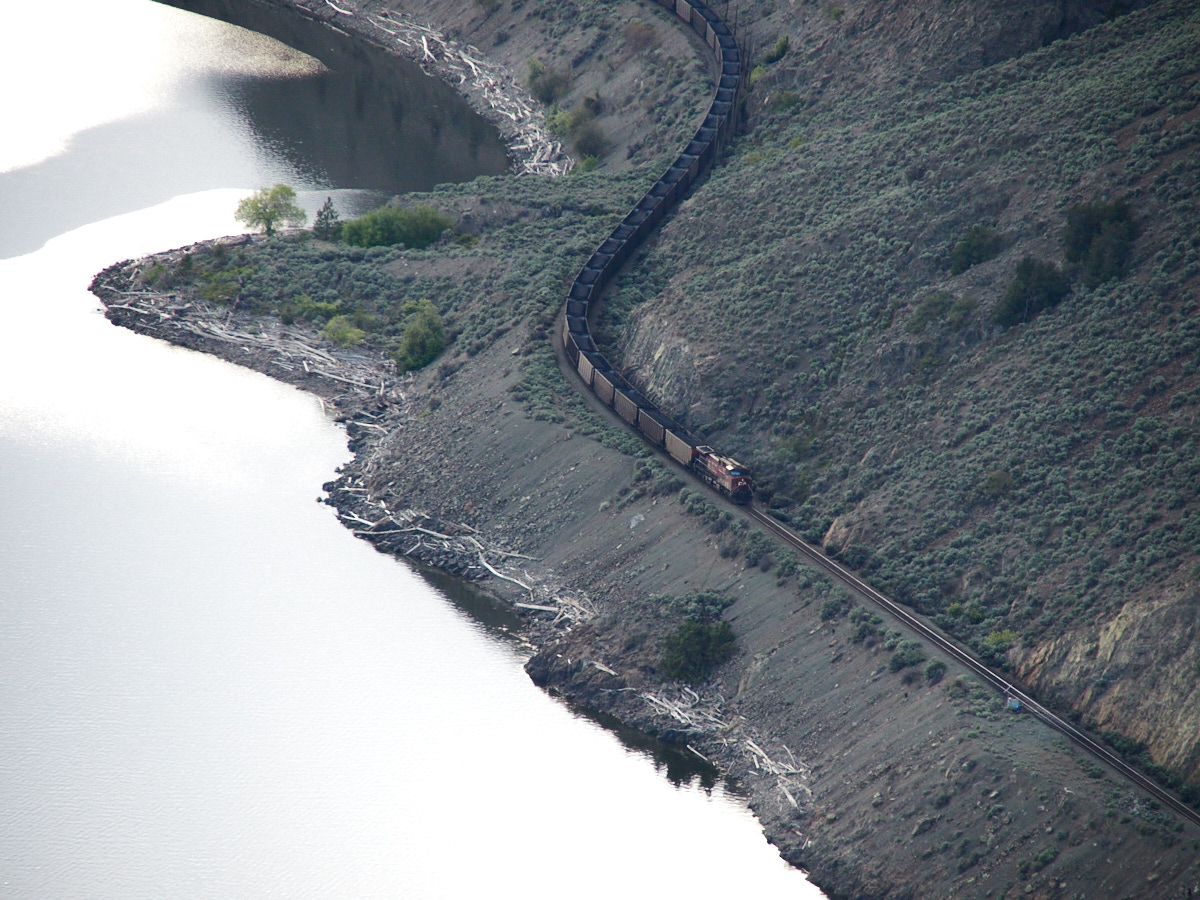
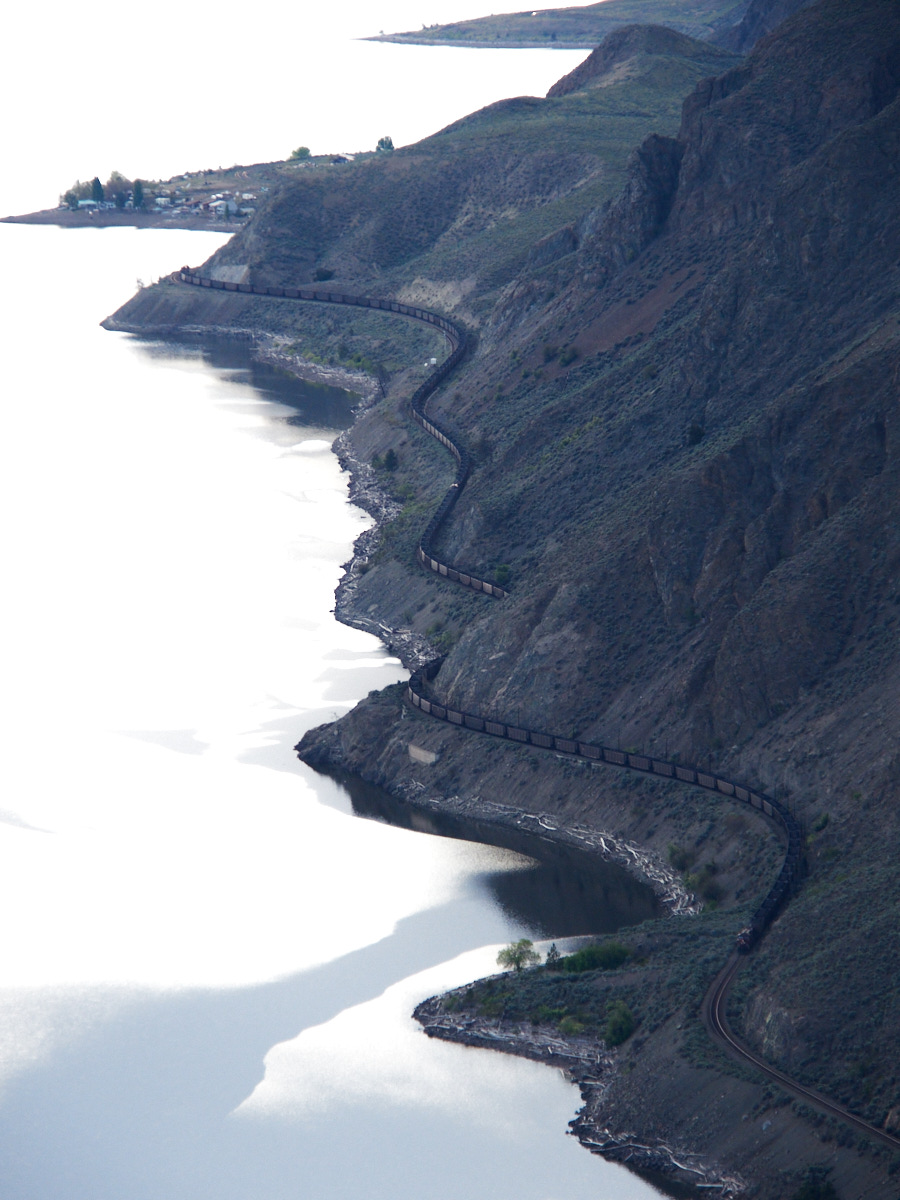
Railroads aren’t the only industrial blight I could see.
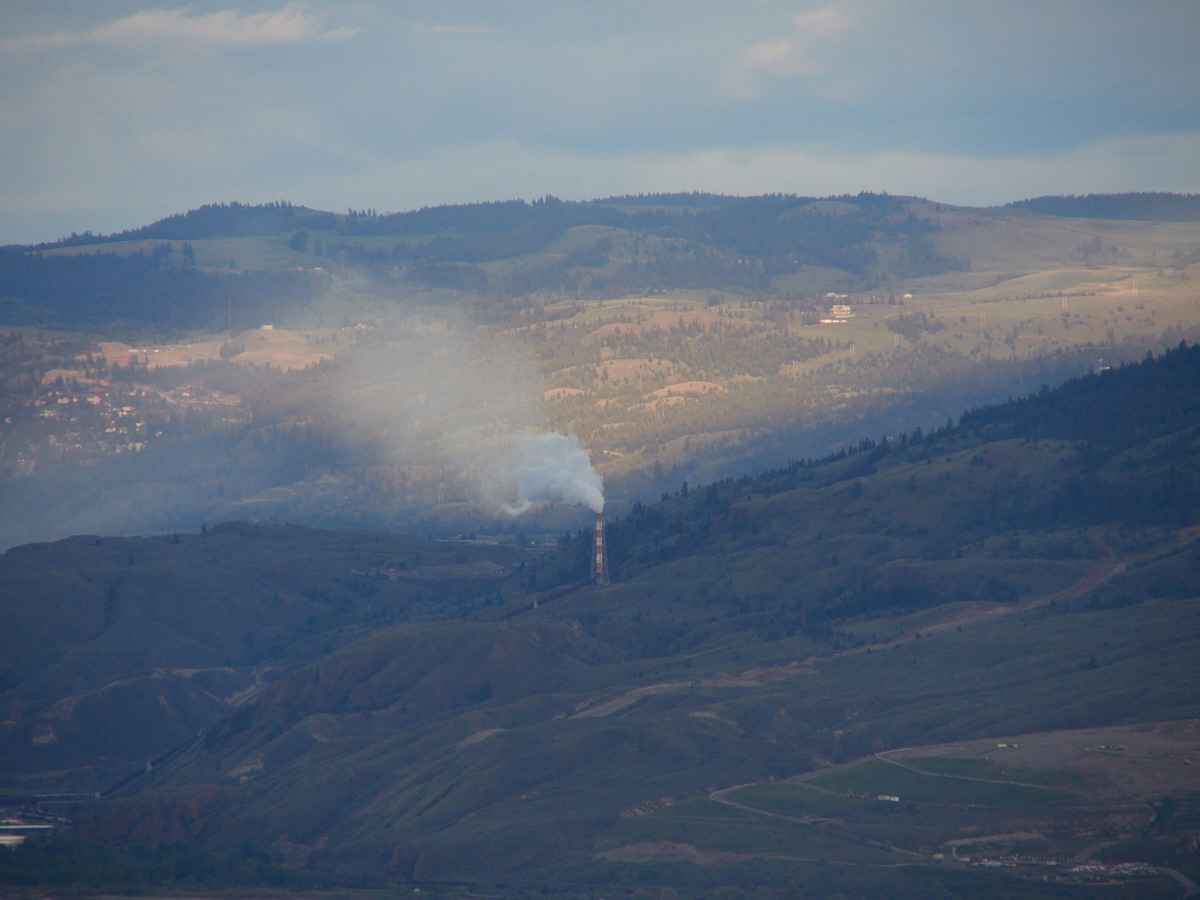
But hey, I could also frame my surroundings to minimize the human impacts.
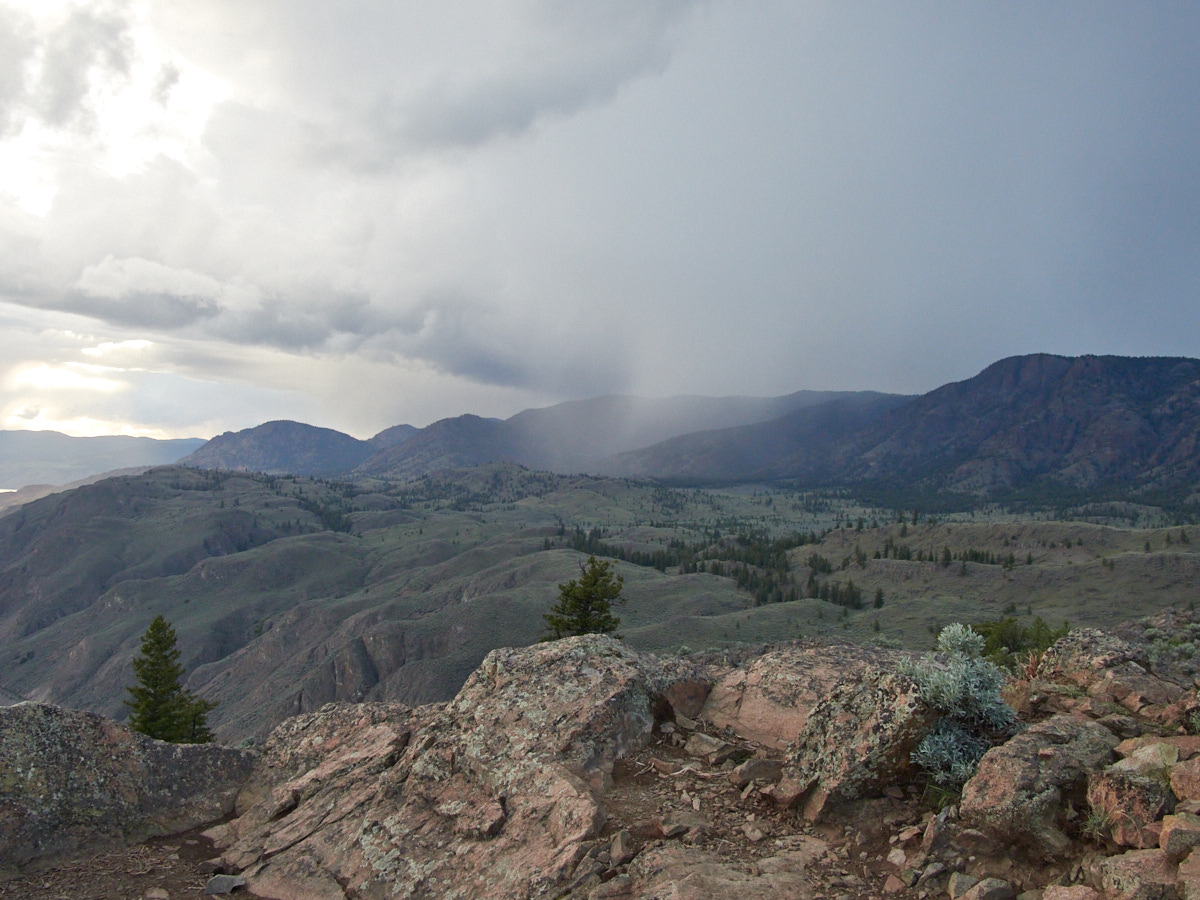
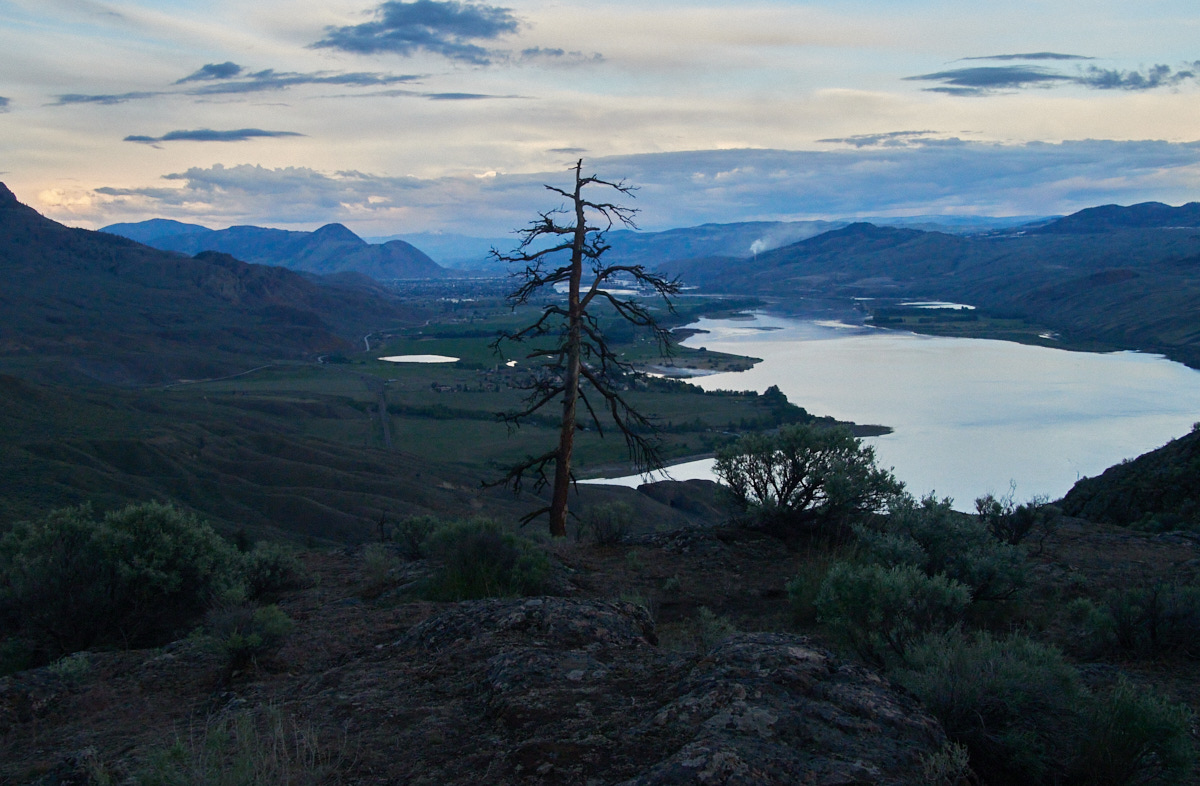
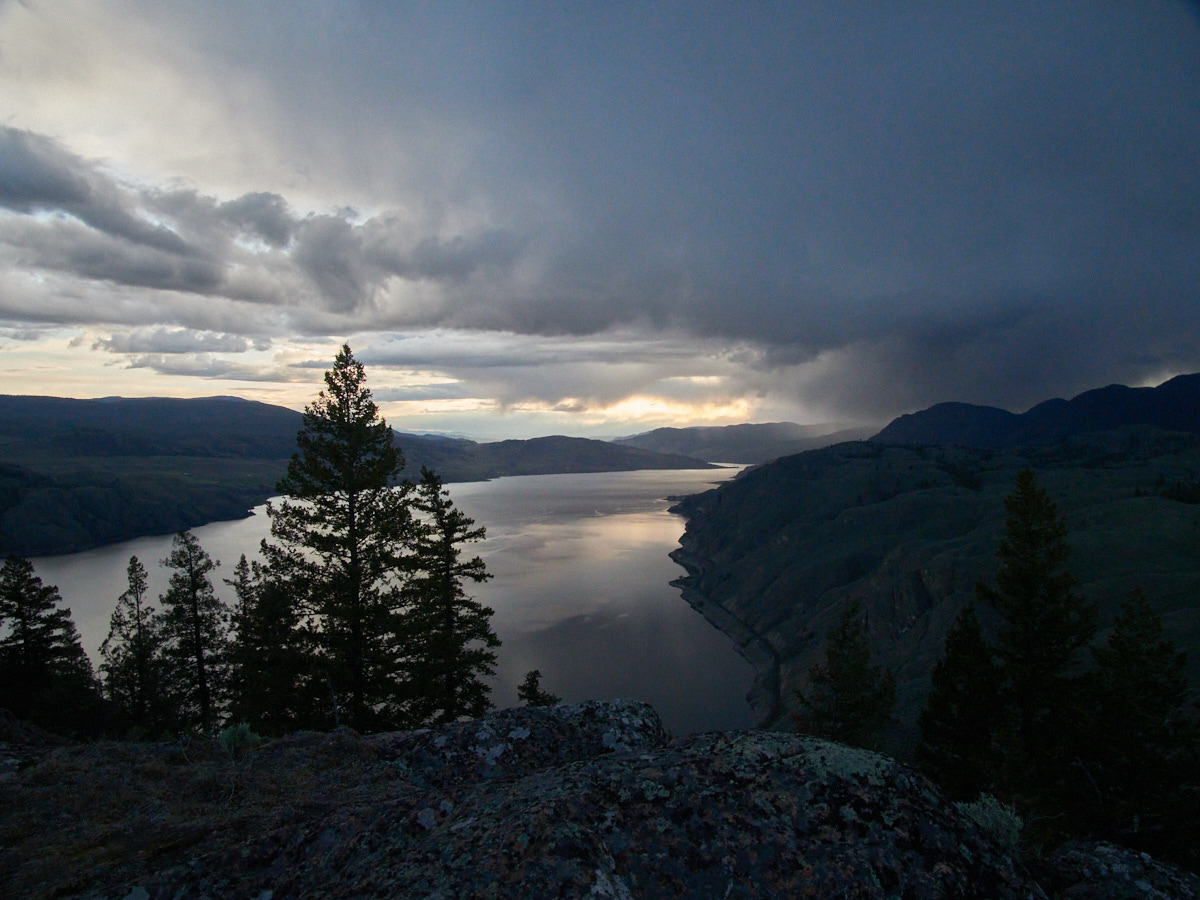
With the cloud cover, I was no longer expecting to be dazzled, so I thought it was best to head back as the sun began to set, and hopefully have some more hours for my grocery shopping.
Walking down & back to the parking lot, the sunset continued to look pretty.
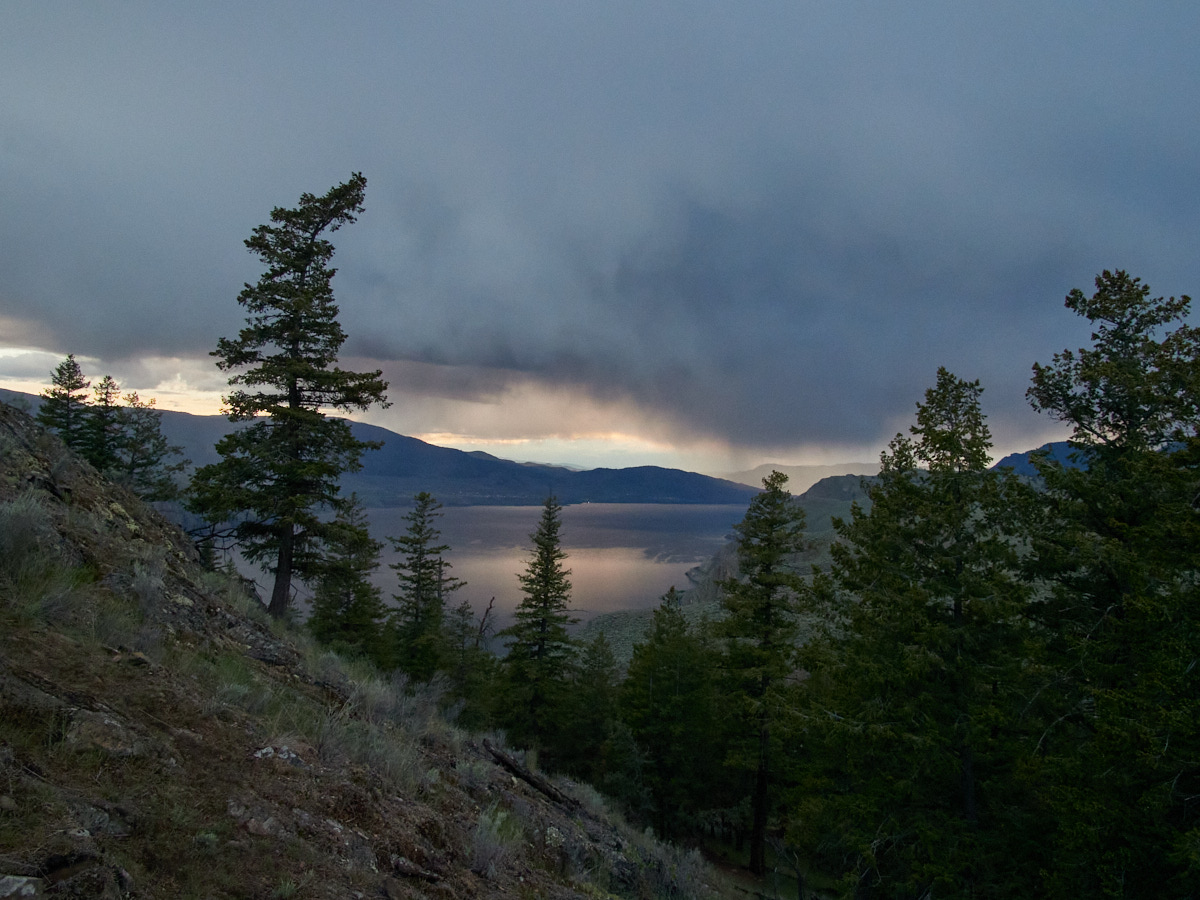
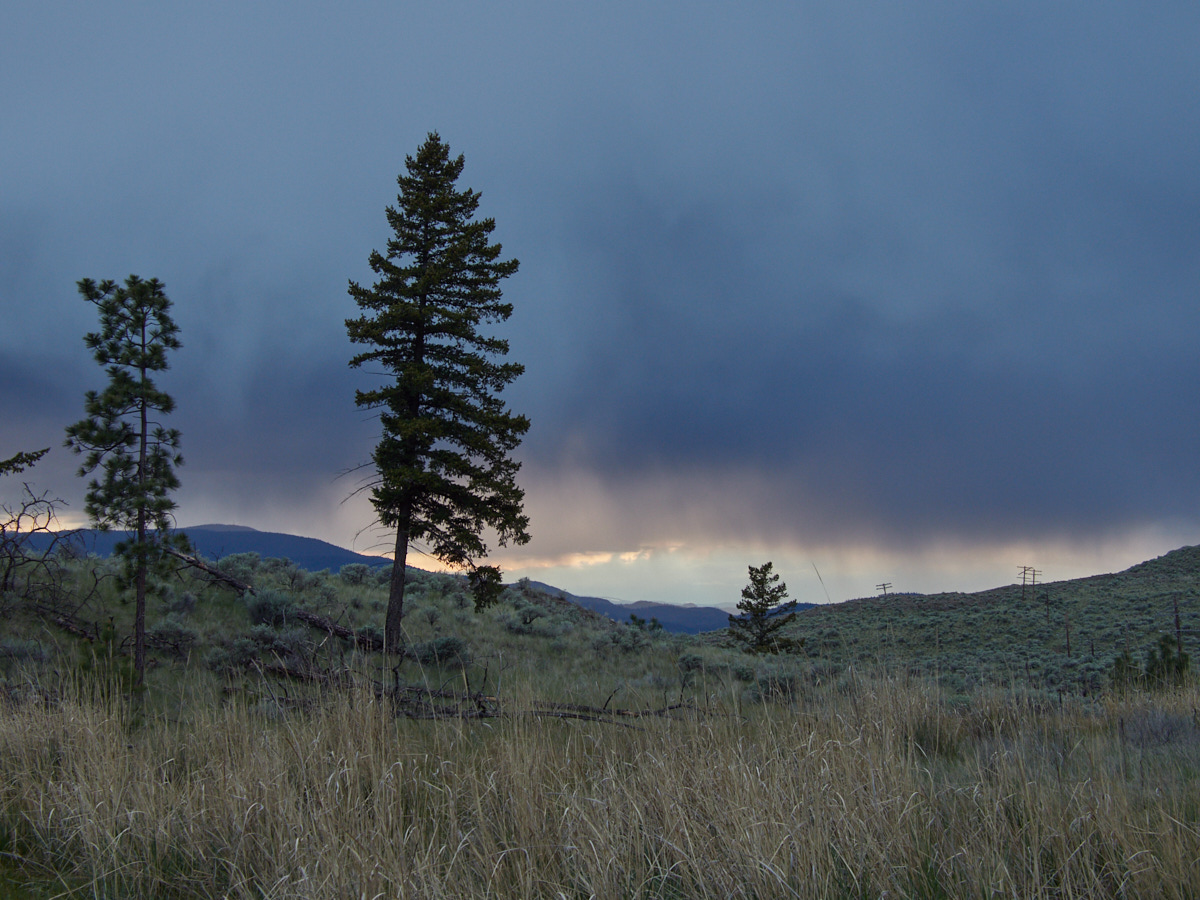
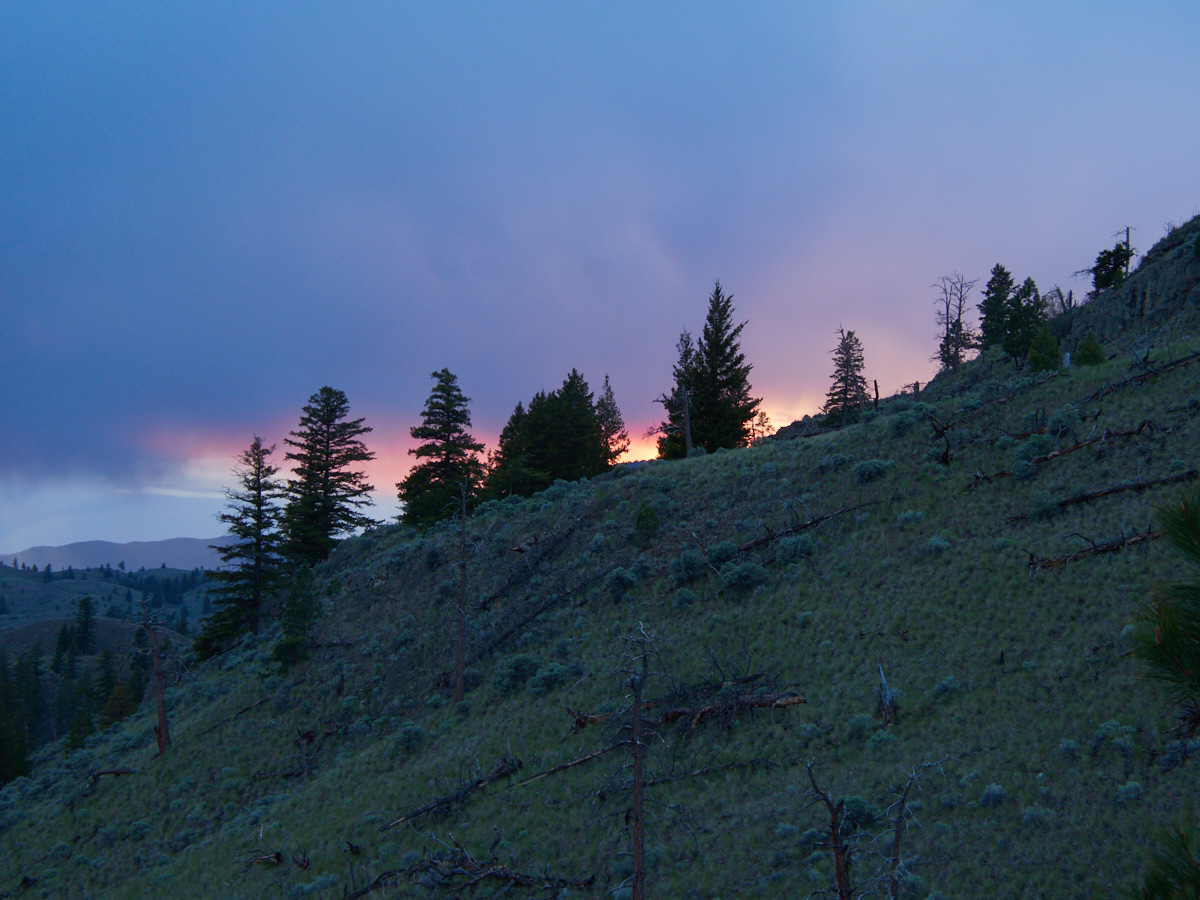
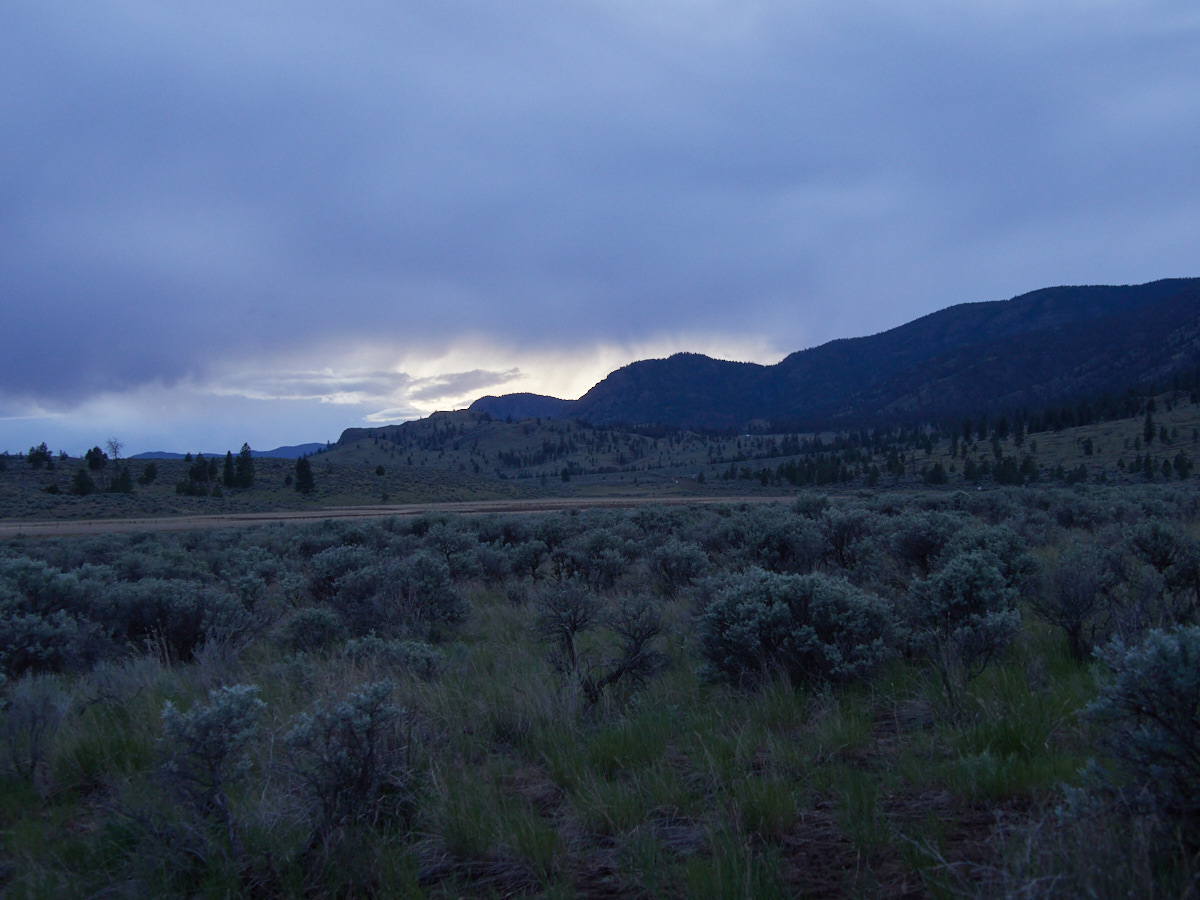
As I left Battle Bluff, the clouds began to sprinkle lightly on the dirt road, and one of those oh so long train cars decided to stop me in my tracks.
I moved on from being frustrated.
My heart and my eyes were open, and I was ready for whatever the next days would bring me.
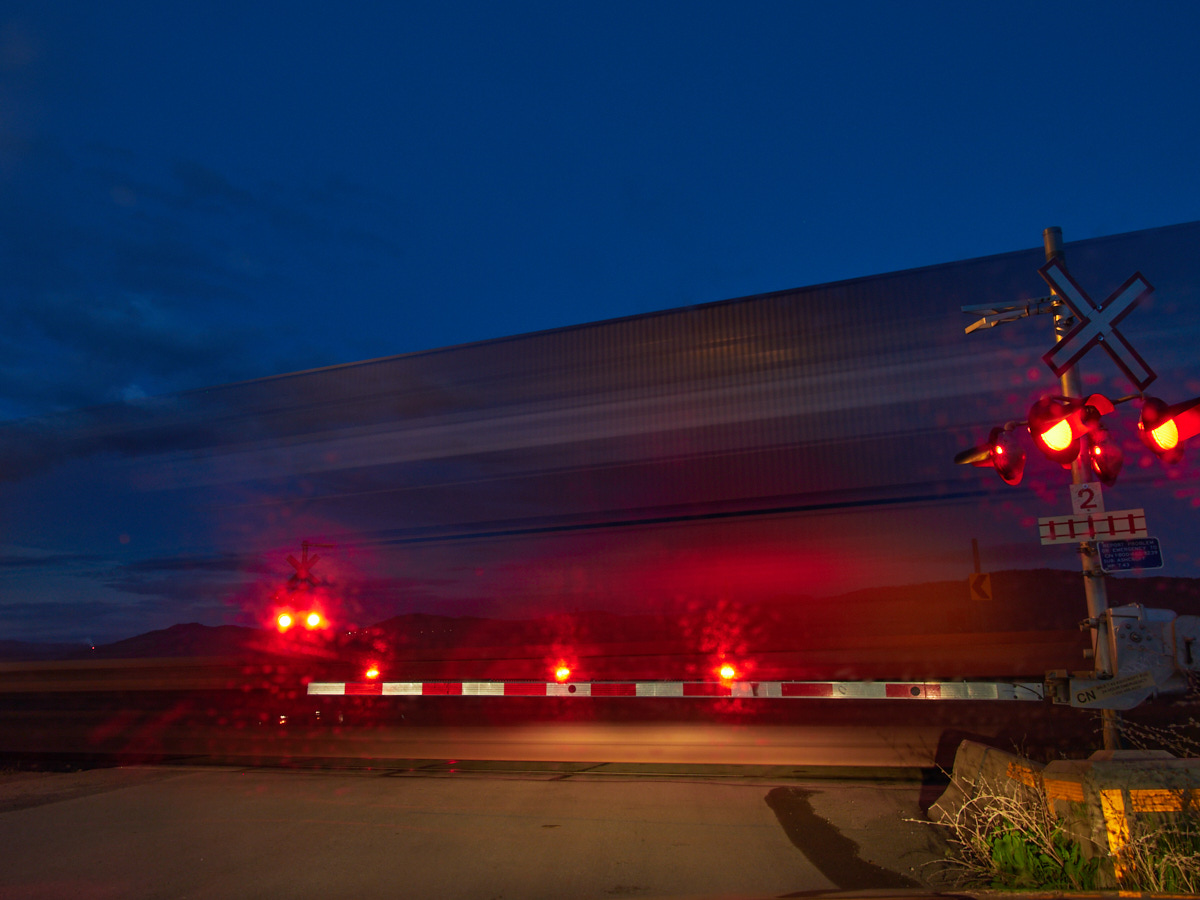
STEVE, CLEAN YOUR LENS!!! open_in_full info
This post was part of a series:
Thanks for reading!
If you enjoyed this post, you might enjoy these 5 similar posts:
- 2022-09-07 —Shopping Malls and Frustration in Kamloops
- 2022-10-05 —Birds, a Broken Arrow, and a Bed of Fossils in the Bulkley Valley
- 2022-12-26 —To Whitefish And Back Again
- 2022-10-16 —Torpid in Terrace
- 2023-07-29 —My First Visit to Vancouver, B.C. (2018)